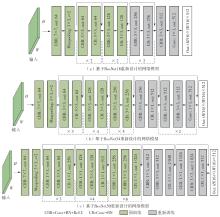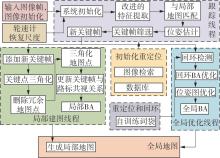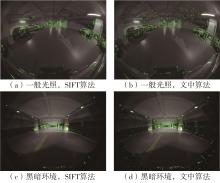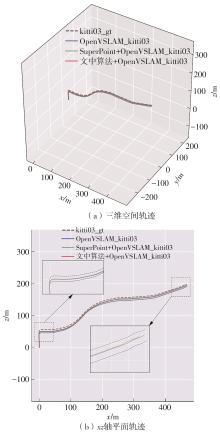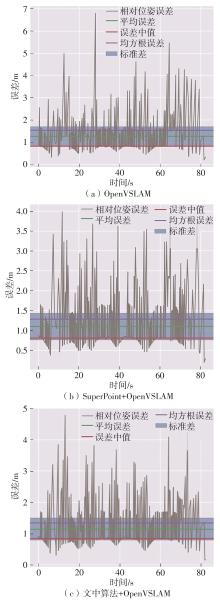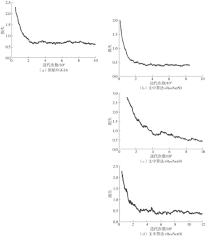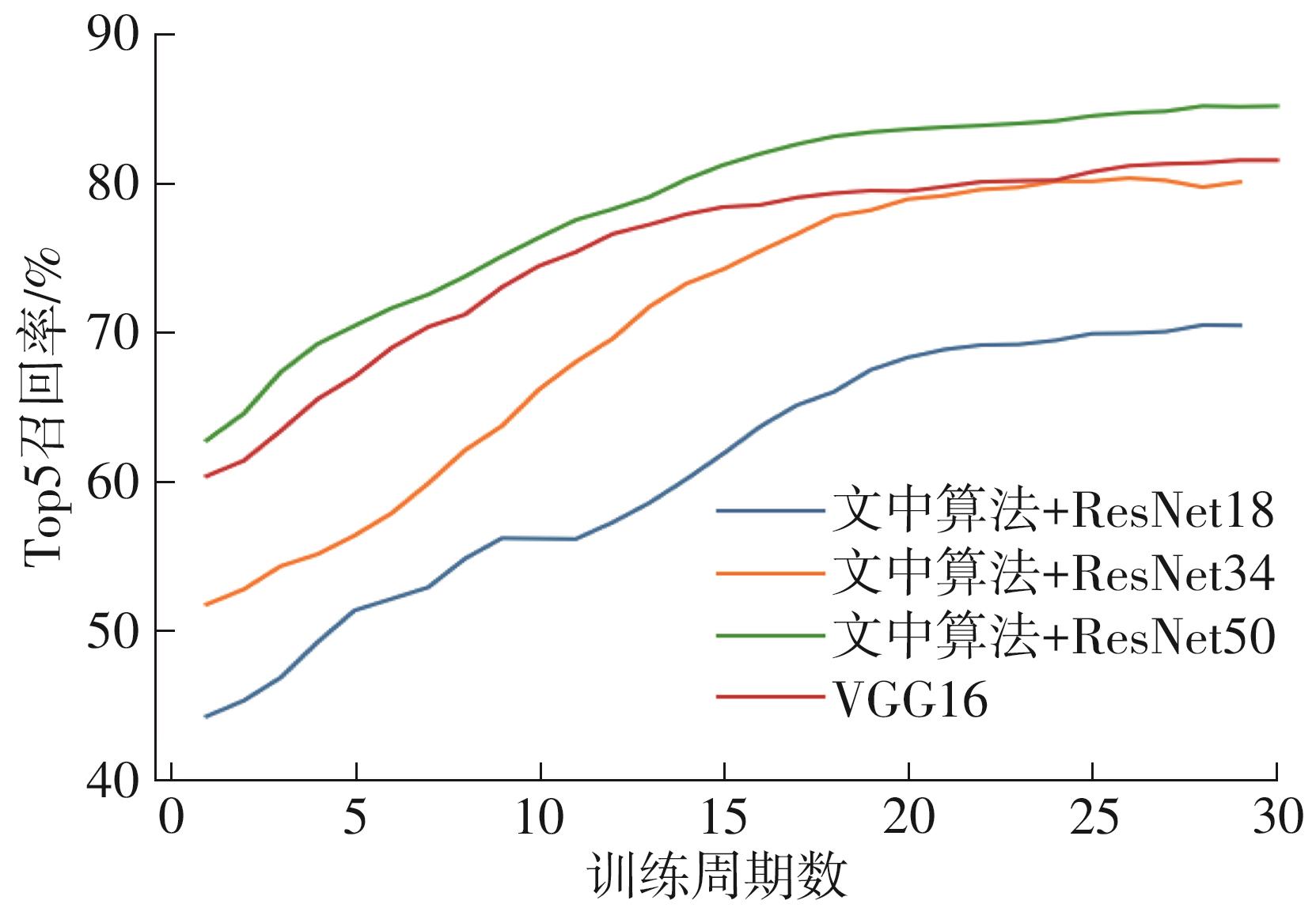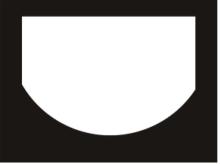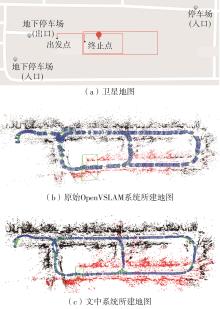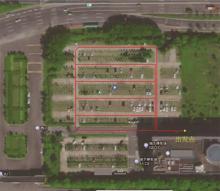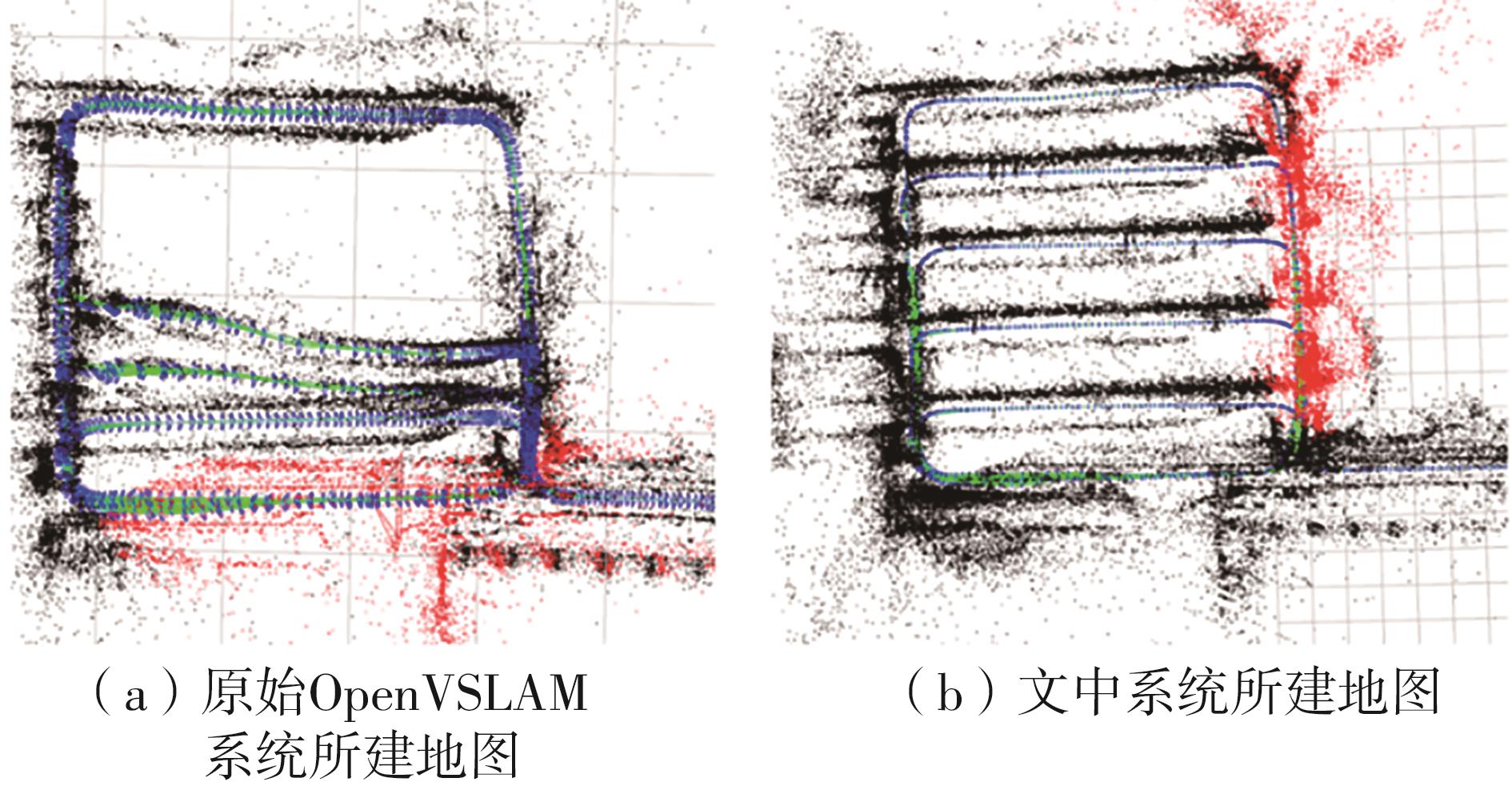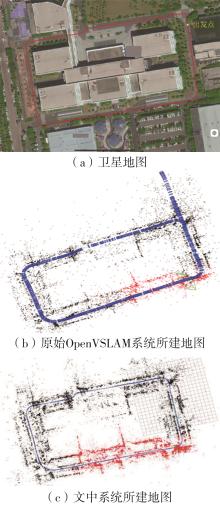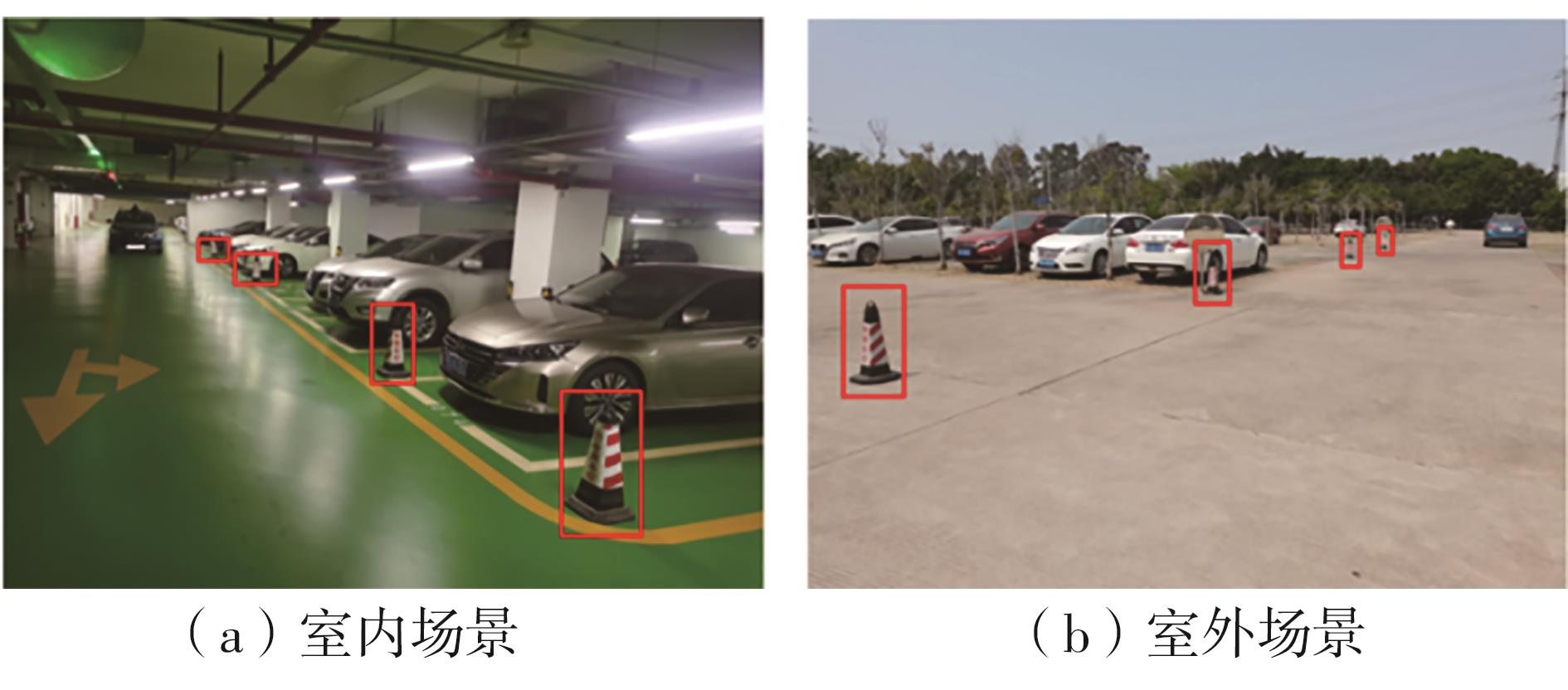Journal of South China University of Technology(Natural Science Edition) ›› 2024, Vol. 52 ›› Issue (6): 1-11.doi: 10.12141/j.issn.1000-565X.230262
Special Issue: 2024年绿色智慧交通
• Green & Intelligent Transportation • Previous Articles Next Articles
Visual SLAM Algorithm Based on Memory Parking Scene
HU Xizhi( ), CUI Bofei(
), CUI Bofei( ), WANG Qin, LIU Hong
), WANG Qin, LIU Hong
- School of Mechanical and Automotive Engineering,South China University of Technology,Guangzhou 510640,Guangdong,China
-
Received:2023-04-22Online:2024-06-10Published:2023-10-27 -
Contact:CUI Bofei E-mail:huxizhi@scut.edu.cn;klysxc616@163.com -
Supported by:the National Natural Science Foundation of China(51975219)
CLC Number:
Cite this article
HU Xizhi, CUI Bofei, WANG Qin, LIU Hong. Visual SLAM Algorithm Based on Memory Parking Scene[J]. Journal of South China University of Technology(Natural Science Edition), 2024, 52(6): 1-11.
share this article
Table 1
Network details of lightweight shared encoder"
| 结构名称 | 执行操作 | 关键参数 | |||
|---|---|---|---|---|---|
| 输入输出通道数 | 核大小 | 步长 | |||
| Block1 | Conv1_a | DPconv+BN+LReLU | 1,64 | 3 × 3 | 1 |
| Conv1_b | DPconv+BN+LReLU | 64,64 | 3 × 3 | 1 | |
| Pooling1 | Max pooling | 64,64 | 2 × 2 | 2 | |
| Block2 | Conv2_a | DPconv+BN+LReLU | 64,64 | 3 × 3 | 1 |
| Conv2_b | DPconv+BN+LReLU | 64,64 | 3 × 3 | 1 | |
| Pooling2 | Max pooling | 64,64 | 2 × 2 | 2 | |
| Block3 | Conv3_a | DPconv+BN+LReLU | 64,128 | 3 × 3 | 1 |
| Conv3_b | DPconv+BN+LReLU | 128,128 | 3 × 3 | 1 | |
| Pooling3 | Max pooling | 128,128 | 2 × 2 | 2 | |
| Block4 | Conv4_a | DPconv+BN+LReLU | 128,128 | 3 × 3 | 1 |
| Conv4_b | DPconv+BN+LReLU | 128,128 | 3 × 3 | 1 | |
| 1 | DAVISON A J, REID I D, MOLTON N D,et al .MonoSLAM:real-time single camera SLAM[J].IEEE Transactions on Pattern Analysis and Machine Intelligence,2007,29(6):1052-1067. |
| 2 | 田超然 .面向视觉SLAM的联合特征匹配和跟踪算法研究[D].深圳:中国科学院深圳先进技术研究院,2020. |
| 3 | KONDA K, MEMISEVIC R .Learning visual odometry with a convolutional network[C]∥Proceedings of the 10th International Conference on Computer Vision Theory and Applications.[S. l.]:SciTePress,2015:486-490. |
| 4 | COSTANTE G, MANCINI M, VALIGI P,et al .Exploring representation learning with CNNs for frame-to-frame ego-motion estimation[J].IEEE Robotics and Automation Letters,2016,1(1):18-25. |
| 5 | ULLMAN S .The interpretation of structure from motion[J].Proceedings of the Royal Society of London,Series B,Biological Sciences,1979,203(1153):405-426. |
| 6 | ZHOU H, UMMENHOFER B, BROX T .DeepTAM:deep tracking and mapping[C]∥Proceedings of the 2018 European Conference on Computer Vision.[S. l.]:[s. n.],2018:822-838. |
| 7 | NEWCOMBE R A, LOVEGROVE S J, DAVISON A J .DTAM:dense tracking and mapping in real-time[C]∥Proceedings of 2011 International Conference on Computer Vision.[S. l.]:IEEE,2011:2320-2327. |
| 8 | HANDA A, BLOESCH M, PĂTRĂUCEAN V,et al .gvnn:neural network library for geometric computer vision[C]∥Proceedings of Computer Vision—ECCV 2016 Workshops.Amsterdam:Springer International Publishing,2016:67-82. |
| 9 | WANG S, CLARK R, WEN H,et al .Deepvo:towards end-to-end visual odometry with deep recurrent convolutional neural networks[C]∥Proceedings of 2017 IEEE International Conference on Robotics and Automation.[S. l.]:IEEE,2017:2043-2050. |
| 10 | TANG J, FOLKESSON J, JENSFELT P .Geometric correspondence network for camera motion estimation[J].IEEE Robotics & Automation Letters,2018,3(2):1010-1017. |
| 11 | 兰凤崇,李继文,陈吉清 .面向动态场景复合深度学习与并行计算的DG-SLAM算法[J].吉林大学学报(工学版),2021,51(4):1437-1446. |
| LAN Feng-chong, LI Ji-wen, CHEN Ji-qing .DG-SLAM algorithm for dynamic scene compound deep learning and parallel computing[J].Journal of Jilin University (Engineering and Technology Edition),2021,51(4):1437-1446. | |
| 12 | 阮晓钢,郭佩远,黄静 .动态场景下基于深度学习的语义视觉SLAM[J].北京工业大学学报,2022,48(1):16-23. |
| RUAN Xiaogang, GUO Peiyuan, HUANG Jing .Semantic visual SLAM based on deep learning in dynamic scenes[J].Journal of Beijing University of Technology,2022,48(1):16-23. | |
| 13 | DETONE D, MALISIEWICZ T, RABINOVICH A .Superpoint:self-supervised interest point detection and description[C]∥Proceedings of the IEEE Conference on Computer Vision and Pattern Recognition Workshops.[S. l.]:IEEE,2018:224-236. |
| 14 | SCHMID C, MOHR R, BAUCKHAGE C .Evaluation of interest point detectors[J].International Journal of Computer Vision,2000,37(2):151-172. |
| 15 | GEIGER A, LENZ P, STILLER C,et al .Vision meets robotics:the kitti dataset[J].The International Journal of Robotics Research,2013,32(11):1231-1237. |
| 16 | STURM J, ENGELHARD N, ENDRES F,et al .A benchmark for the evaluation of RGB-D SLAM systems[C]∥Proceedings of the 2012 IEEE/RSJ International Conference on Intelligent Robots and Systems.[S. l.]:IEEE,2012:573-580. |
| [1] | ZUO Bin, DONG Tianhang, ZHANG Zehui, WANG Huajun, HUO Weiwei, GONG Wenfeng, CHENG Junsheng. Proton Exchange Membrane Fuel Cell Fault Prediction Method Based on Deep Learning [J]. Journal of South China University of Technology(Natural Science Edition), 2025, 53(7): 21-30. |
| [2] | HU Guanghua, DAI Zhigang, WANG Qinghui. Machining Feature Recognition Method of B-Rep Model Based on Graph Neural Network [J]. Journal of South China University of Technology(Natural Science Edition), 2025, 53(5): 20-31. |
| [3] | LIU Hao, YUAN Hui, CHEN Chen, et al. Point Cloud Geometry Coding Framework Based on Sampling [J]. Journal of South China University of Technology(Natural Science Edition), 2024, 52(6): 148-156. |
| [4] | YANG Chunling, LIANG Ziwen. Feature-Domain Proximal High-Dimensional Gradient Descent Network for Image Compressed Sensing [J]. Journal of South China University of Technology(Natural Science Edition), 2024, 52(3): 119-130. |
| [5] | ZHENG Juanyi, DONG Jiahao, ZHANG Qingjue, et al. Reconfigurable Intelligence Surface Channel Estimation Algorithm Based on RDN [J]. Journal of South China University of Technology(Natural Science Edition), 2024, 52(3): 102-111. |
| [6] | CONG Ming, WEN Xu, WANG Minghao, et al. A GPS-Laser-IMU Fusion Mapping Algorithm Based on Iterated Kalman Filter [J]. Journal of South China University of Technology(Natural Science Edition), 2024, 52(3): 75-83. |
| [7] | ZHOU Lang, FAN Kun, QU Hua, et al. Forest Fire Recognition by Improved EfficientNet-E Model Based on ECA Attention Mechanism [J]. Journal of South China University of Technology(Natural Science Edition), 2024, 52(2): 42-49. |
| [8] | CHEN Qiong, FENG Yuan, LI Zhiqun, YANG Yong. Semantic-Visual Consistency Constraint Network for Zero-Shot Image Semantic Segmentation [J]. Journal of South China University of Technology(Natural Science Edition), 2024, 52(10): 41-50. |
| [9] | LIU Weipeng, LI Xu, REN Ziwen, QI Yedong. Algorithm for Multiscale Residual Deformable Lung CT Image Registration [J]. Journal of South China University of Technology(Natural Science Edition), 2024, 52(10): 135-145. |
| [10] | HU Guanghua, TU Qianxi. Surface Defect Detection Method for Industrial Products Based on Photometric Stereo and Dual Stream Feature Fusion Network [J]. Journal of South China University of Technology(Natural Science Edition), 2024, 52(10): 112-123. |
| [11] | LI Fang, GUO Weisen, ZHANG Ping, et al.. Prediction Technique for Remaining Useful Life of Bearing Based on Spatial-Temporal Dual Cell State [J]. Journal of South China University of Technology(Natural Science Edition), 2023, 51(9): 69-81. |
| [12] | SU Jindian, YU Shanshan, HONG Xiaobin. A Self-Supervised Pre-Training Method for Chinese Spelling Correction [J]. Journal of South China University of Technology(Natural Science Edition), 2023, 51(9): 90-98. |
| [13] | LI Jiachun, LI Bowen, LIN Weiwei. AdfNet: An Adaptive Deep Forgery Detection Network Based on Diverse Features [J]. Journal of South China University of Technology(Natural Science Edition), 2023, 51(9): 82-89. |
| [14] | GUO Enqiang, FU Xinsha. Dropped Object Detection Method Based on Feature Similarity Learning [J]. Journal of South China University of Technology(Natural Science Edition), 2023, 51(6): 30-41. |
| [15] | ZHAO Jiandong, JIAO Lanxin, ZHAO Zhimin, et al. A Car-Following Model Driven by Combination of Theory and Data Considering Effects of Lane Change of Side Cars [J]. Journal of South China University of Technology(Natural Science Edition), 2023, 51(6): 10-19. |
| Viewed | ||||||
|
Full text |
|
|||||
|
Abstract |
|
|||||


